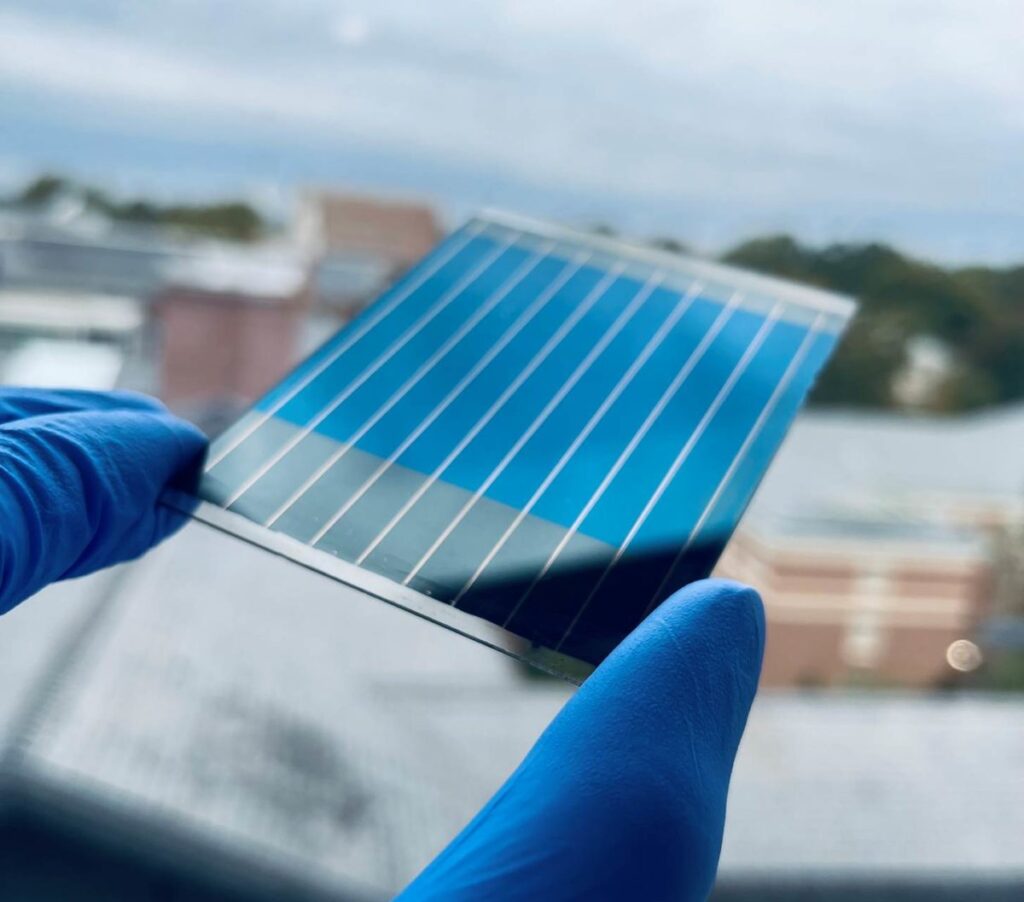Lead-absorbing encapsulation for 18.5%-efficient mini perovskite solar module

The solar module has an area of 31.5cm2 and is relying on perovskite cells with an efficiency of 22.9%. It was encapsulated with a special ionogel that is claimed to enhance the module’s impact resistivity and stability, as well as to reduce the possibility of lead leakage.

A Chinese-U.S. research group has fabricated a mini perovskite solar module with a novel encapsulation technique based on the use of a self-healable, lead-adsorbing ionogel that prevents lead leakage.
The ionogel is based on the polymer poly(acrylic acid), which is also known as PAA, and is claimed to enhance the module’s impact resistivity and stability, as well as to reduce the possibility of lead leakage. “The commercialization of the encapsulation technique will depend on the perovskite module stability,” researcher Jinsong Huang told pv magazine. “We did a cost analysis and found this encapsulation does not increase the cost of regular modules.”
The scientists explained that ionogel sealants were applied on the panel’s front glass and between electrode and encapsulation glass, with the 100μm-thick inonogel being able to hold the shattered glass together even if the glass breaks. This is claimed to effectively suppress lead leakage from broken modules after hail test or compression by car wheels, and soaking in water for 45 days.
The solar module has an area of 31.5cm2 and is relying on perovskite cells with an efficiency of 22.9%. Silicone glue was used for edge sealing and an anti-reflection polydimethylsiloxane (PDMS) layer was applied on the front, heat-strengthened glass to improve light absorption and, at the same time, to protect the lead-adsorbing ionogels from contamination. A polyolefin elastomer (POE) sealant ensures encapsulation and separates the ionogel and the perovskite device, which is based on the perovskite MA0.7FA0.3PbI3 based on methylammonium, formamidinium, and lead iodide.
The module showed a power conversion efficiency of 18.5%, an open-circuit voltage of 10.09 V, a short-circuit current of 74.6 mA, and a fill factor of 0.773. The scientists tested the stability of the panel via damp heat (DH) and thermal cycling tests according to the IEC 61215 accelerated test standard. The capability and kinetics of the PAA ionogel to prevent lead leakage were also tested by soaking PAA ionogel film into methylammonium lead iodide (MAPbI3) aqueous solution. “[The] incorporation of ionogel in the encapsulation markedly suppressed lead leakage from broken perovskite modules,” the scientists stated. “Undetectable lead could escape from the damaged perovskite module after a simulated hail test, followed by water [soaking] for 24 hours.”
A full description of the solar module can be found in the paper Lead-adsorbing ionogel-based encapsulation for impact-resistant, stable, and lead-safe perovskite modules, which was recently published in ScienceAdvances. The research group includes academics from the University of North Carolina, North Carolina State University, and the Chinese Academy of Sciences.
From: https://www.pv-magazine.com/2021/11/03/lead-absorbing-encapsulation-for-18-5-efficient-mini-perovskite-solar-module/

